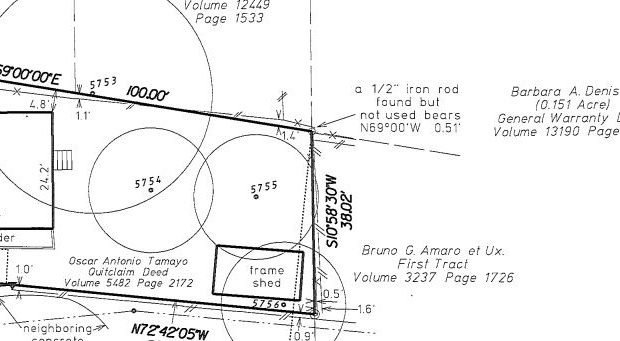BoA puts Bouldin variance on hold
Tuesday, April 17, 2018 by
Elizabeth Pagano There’s no use being coy at the Board of Adjustment. That’s the lesson one Bouldin Creek homeowner learned at its most recent meeting.
Architect David Webber spoke on behalf of homeowners William Mass and Nancy Hellman. Webber was seeking a variance to decrease the minimum front yard setback from the existing 25 feet to 15 feet at 1605 South Third Street.
“Their hope is for this to be their final house. They are intending to age in place,” said Webber. “So we tried to pare down the footprint as much as possible to only components they need on the main level for themselves.”
However, limited information about everything but the footprint concerned board members, who voted unanimously to postpone the case to their May 14 meeting.
Webber explained that the second floor had guest bedrooms for visitors. He said the 25-foot setback pushed the house to the back of the lot, and without a reduced setback the owners would be forced to remove a pecan tree that they would prefer to maintain. Allowing the home to sit closer to the street had the benefit of allowing them to have solar panels on the roof of the home, out of the shade of that tree, he added.
Webber said that the owners had tried to used setback averaging, which would allow them to take nearby homes with similar setbacks into account. But those nearby houses with setbacks similar to the one the owners were seeking did not qualify for inclusion averaging because those houses had recently changed their orientation, switching their address from one street to another. So, instead, the owners opted to seek a variance.
Without knowing the full scope of the project, Board Member Bryan King suggested that the variance could be granted if the owners agreed to a 0.4 floor area ratio. He explained that was his practice for variances on substandard lots like this one, which is smaller than the standard city lot size. However, the architect and homeowner explained that current plans were well over King’s proposed limit – at a 0.54 floor area ratio.
“(That isn’t) in scale with everyone else that is complying with the McMansion scale,” said King. Doing some quick calculations, he determined that the 0.4 limit would allow a home of 1,622 square feet.
“If I’ve got the numbers right, you are planning to build right at 2,200 square feet on this lot that’s 1,000 feet smaller” than a normal-sized lot, continued King. “Nah, not going to support that one.”
Board Member Brooke Bailey said that she would need to see the plans for the full house – not just the first-floor plans that were provided, but the plans for the second floor, garage and screened porch as well.
“Those are the kind of things that make an impact on our decision, because you are asking for a variance on your front setback,” said Bailey. “We need to see how that now-two-story home … is going to impact that streetscape. It’s part of our decision-making process when you are asking for a variance that moves you 10 feet closer to the street.”
Board Member Melissa Hawthorne agreed. “You need to show that you are like everyone else, and you aren’t getting a special privilege if you are pulling the massing of the building closer.”
The Austin Monitor’s work is made possible by donations from the community. Though our reporting covers donors from time to time, we are careful to keep business and editorial efforts separate while maintaining transparency. A complete list of donors is available here, and our code of ethics is explained here.
You're a community leader
And we’re honored you look to us for serious, in-depth news. You know a strong community needs local and dedicated watchdog reporting. We’re here for you and that won’t change. Now will you take the powerful next step and support our nonprofit news organization?



